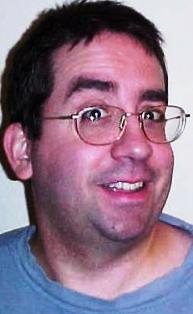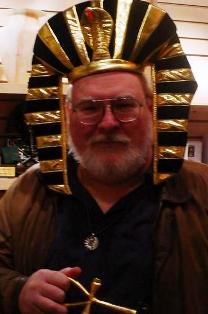Michael Summers over at the Fort Wayne Reader has written a wonderful article in the latest issue of the Fort Wayne Reader entitled Myths of the Smoking Ban (copied below) which opens up data on several other issues regarding City and County politics that I feel every citizen should take a second look at.
F6 is going to analyze his article and rip off (with credit given to Michael for it here), the original data and highlight some other issues in the next couple of posts that are prevalent issues in both City and County governance especially with recent statements and actions by the City Council and Mayor Henry, along with the At Large County Council and Commissioner races coming to a head this fall, and the conversation at the State level with the Commission on Local Government's controversial recommendations for changing the way business is done at the local level- sort of. No, the city’s smoking ban isn’t going anywhere, and yes, seven months later, area bars are still waiting for all those new customers
No, the city’s smoking ban isn’t going anywhere, and yes, seven months later, area bars are still waiting for all those new customers
Since Fort Wayne’s ordinance prohibiting smoking in virtually all public areas went into effect on June 1, 2007, the fallout on local businesses has been the subject of rampant speculation and rumor-mongering.
Food and Beverage Tax revenues have plummeted or they’ve shot up; dozens of bars and restaurants across the city were closing their doors and laying off employees or they were hiring more staff to handle the flood of new customers; formerly crowded establishments were virtually empty or they were so packed you couldn’t find a table. Violations were so widespread that the fire department couldn’t write tickets fast enough. We even heard one rumor that claimed some bars in town were allowing smoking and just paying the fines.
For the record, the Fire Department says they’ve only issued two tickets — both to businesses, at $100 a piece — and 21 warnings in the seven months the ordinance has been in effect. 12 tickets were issued the year after the first ordinance was passed in 1998 (we’re law-abiding folks here in Fort Wayne, or at least not snitches).
But while the damage the recent ordinance has had on local restaurants and bars is perhaps not as hysterical as the rumors might suggest, the truth for some segments of the hospitality industry is ugly enough — they really are suffering. Places have closed their doors and let go of employees. Bar and restaurant owners in Fort Wayne report seeing their regulars less frequently, that customers drink less and don’t stay as long. Furthermore, they complain that it’s not a level playing field; the smoking ordinance applies to the Fort Wayne city limits, not Allen County, and they’ve seen their business move outside the city limits.
In short, many of the things that city officials claimed wouldn’t happen as a result of the smoking ban have become the reality.
The ordinance was proposed in late 2006 by Dr. John Crawford, Republican At-Large on the Fort Wayne City Council. Inspired by a Surgeon General’s report earlier in the year that stated there was no risk-free level of exposure to second-hand smoke and modeled on similar laws in cities all over the country, the ordinance banned smoking in almost all public areas — bars, restaurants, clubs, workplaces, and the majority of hotel and motel rooms.
In an interview last year in FWR #69, Dr. Crawford anticipated some of the concerns local businesses might have with the new ordinance. “We’ll hear all the same things we heard 10 years ago (with the 1998 ordinance): ‘If we do this, all the restaurants will go out of business. If we do this, nobody will come to Fort Wayne, and dah-dah-dah.’ But remember, all those other states that have done this have looked at all this, and that doesn’t happen.”
He added that a study looking at sales tax receipts from restaurants the year before and after the 1998 smoking ordinance showed absolutely no effect. “The reason there wasn’t a change is, remember, 3/4 of the people don’t smoke and 1/4 do, so the 1/4 that smokes, they go out a little bit less, and the 3/4 that don’t smoke, they go out a little more,” Dr. Crawford said. “For example, I don’t go to a bowling alley now because I can’t stand the smoke, but I’ll go when it’s smoke-free. Same thing with bars.”
In another media outlet, Crawford said he wasn’t worried about any election year backlash, because “smokers don’t vote.”
Apparently, smokers do vote, just not for Dr. Crawford. He lost his bid for re-election last November, with many claiming that his work on the smoking ban made him a target for disgruntled citizens. The issue was so controversial that many political candidates in last year’s elections mentioned they would like to “re-visit” the city’s smoking ban.
But odds are, nobody is going to re-visit anything. Proponents of the ordinance gained more ammunition when a study conducted by the Roswell Park Cancer Institute in Buffalo, New York was released in mid-January. Air pollution monitors were used to measure the levels of fine particulate air pollution at the same 14 establishments in Fort Wayne in May, 2007, before the ban, and then again in the same 14 establishments after the ban in June 2007.
Here’s a shocker: after the ban was instituted, the level of air pollutants went down. All sarcasm aside, the difference is dramatic — the level dropped 94%. “The one thing you eliminated was exposure to second hand smoke,” says Miranda Spitznagle, director of Program Evaluation at Indiana Tobacco Prevention and Cessation (ITPC — www.itpc.in.gov). “It’s taken away, and there’s the difference.” Proponents of the ban have always cited the health risks to hospitality workers as the leading reason to institute the ordinance; in fact, it’s referred to as the “smoke free workplace law.”
Karla Sneegas, executive director of ITPC, who announced the results of the Roswell Center Study in conjunction with Tobacco Free Allen County, United Hispanic-Americans Inc, and the Allen County Health Department, says they’ve seen consistent results in every city where they’ve done the study. Bloomington, IN, the first place where the study was conducted, showed an 89% decrease. As far as the economic impact on such bans, Sneegas says: “Every published study that is an economic review of smoke-free air ordinances that have been implemented does not show an economic effect. At minimum, it shows no effect, and in many instances, it actually shows a net growth. We have not collected any economic data in Fort Wayne, but it has been done in city after city, and has been done on states that have gone smoke free.”
Meanwhile, bar owners like Sammy Leto of the Mid-City Grill are still waiting for all those new customers to show up. “I haven’t seen is that big influx of non-smokers we were supposed to get,” he says. “Those people don’t come out. There have probably been some that have come through, but not enough that I’ve noticed, not enough to see business go back up.”
Leto says he’s seen a change in his business since June. “It’s coming back a little, but not like it used to be. It hurt a lot during the daytime, when we don’t get a lot of the people who used to come after work.”
Lynn Rice, a manager at Mad Anthony’s brewery for about a year-and-a-half, gives an unequivocal “yes” when asked if the smoking ban has had an effect on their business. “(Regular customers) don’t come in as often and don’t stay as long,” she says. “We’ve probably lost more regulars than we’ve gained new customers.”
Judy Dubuisson, day manager at the Brass Rail for 14 years, says she see fewer daytime customers coming in. “A lot of these guys, they’re older people, they have a lot of problems going outside to smoke,” she says. “Now, the night’s totally different, because there’s a bunch of younger people. A lot of them are just 21, 24, so it’s not a big deal to them to go outside, they’re not used to (smoking inside) like the rest of us are.”
Dave Harris at Legend’s says his business has changed, too. “We probably see the same amount of people, but they don’t stay as long, and when they go outside (to smoke), they don’t drink,” he explains.
“I’d say 90% of the people who come in here smoke, so I don’t think they (city council) should have been worried about places like this,” Harris adds. “Maybe the restaurants, but not a place like this. They surely didn’t poll the people, because if they had polled the people who go into each individual place… well, there were other options. But it’s our business. For them to tell us that we can’t let our customers do what they want to do in our business… I just don’t think that’s right. That’s overstepping their boundaries.”
Unlike Leto, who says that Mid-City has had to let go of several employees, Harris says that Legends was operating a minimum staff anyway, so while they definitely haven’t had to hire anybody, no layoffs have been necessary so far. And generally, they all say business is “okay,” though not what it used to be (“we aren’t going anywhere,” says Lynn Rice).
If so, they’re the lucky ones, according to Loren Fifer. The regional president and state vice-president of the Indiana Licensed Beverage Association (ILBA), Fifer owns Peanuts, Peanuts Too, and the Aboite Grill. He estimates that his bar business has seen a decline in the teens percentage-wise (the Aboite Grill doesn’t allow smoking), and they’ve had to let go of a few employees, but at least he’s still around — over 20 other area businesses in the hospitality industry have shut their doors in the last year. “I’m going to open up a Pandora’s Box right now,” Fifer says. “When Kittyhawk closed, and 300 people lost their jobs, everybody thought that was a major tragic event. My question is, why is that so tragic, when 20 other places went out of business? If they averaged 20 – 40 employees, we’re talking 400 – 600 people who have lost their jobs. When the freight industry loses 300 jobs, it’s a big deal. When 600 people in the hospitality industry lose their jobs, it’s no big deal?”
Fifer admits that the smoking ban may not have been the only reason these places went out of business, but after a series of changes over the last several years — raising the DUI rate, the crackdown on the Cherry Masters machines, an uncertain economy — the smoking ban was the final nail in the coffin. “The people who most of the neighborhood bars appeal to — and this may not be politically correct — are basically blue-collar workers,” he says. “Those are the people who are the smokers.”
Where are all those people going? Some are just staying home. Area liquor stores say they’ve seen an increase in sales since June. “Almost to the date, there’s been a significant increase,” says Rachel Vergara, manager at Cap-N-Cork in Foster Park Plaza. “As a matter of fact, there was probably a time when this actual location was in jeopardy, and we aren’t going anywhere now.”
The people are also going to the county, outside the city limits, according to Fifer. Tavern and restaurant owners from New Haven, which doesn’t have the same smoking ordinance, say business is fine out there. In an interview in FWR #92, Rack & Helen’s owner Pat Anderson estimates his business has gone up 12-15%. He can’t attribute it all to Fort Wayne’s smoking ban, but thinks a good chunk of it came from there.
The theory that smokers are now going outside the city limits might explain the fact that collections from Allen County’s Food and Beverage Tax haven’t seemed to change much. According to the Indiana Department of Revenue, collections from May of 2007 were over $513,000, and dropped to $395,000 for June, after the smoking ban went into effect. It’s a considerable drop, especially considering the collections from the same period the previous year went up from $451,000 to over $548,000. But collections were back up to $548,421.90 for July 2007. “Part of what’s happening is when they report the food and beverage tax, that’s for the whole county, that’s not for the city of Fort Wayne only,” Loren Fifer says. “The county hasn’t lost any taxes but the bars and restaurants (outside Fort Wayne) have picked up patrons. Sure, the taxes are up. They should be, because everyone has raised their prices to stay in business.”
As Fifer implies, it’s the neighborhood bars which seemed to have been hit hardest; the restaurants that complied with the 1998 ordinance and created a separate smoking section, or the establishments that catered to a restaurant/bar crowd, tell a slightly different story. Tony Bryant of Big Eyed Fish says it’s actually worked out well for his business; tables turn over faster, and the place was transitioning into more of a family-style restaurant anyway. “We basically shut off the bar business and made it all family room. The bar business just isn’t out there anymore,” Bryant says. “The smokers I did have, they leave after their meal and my tables turn over faster.”
Kyna Steury, assistant manager at Club Soda for about nine years, says things haven’t changed much. The restaurant added a patio area to accommodate their smoking customers, and the non-smokers seem pleased. “Customers have told us, and written us letters, right after the smoking ban was passed, saying they were happy they could now come into Club Soda and enjoy their dinner without smoke,” Steury says.
Steve Gard, owner of the Oyster Bar restaurants, says it’s probably difficult for many restaurants that used to allow smoking to pinpoint why business might be down a little. The economy is flat, gas prices are up… “I think it would be difficult for restaurants to say ‘the smoking ban caused me to be down 2%’ or whatever.”
“I know that the bars have a larger portion of smoking customers than probably most restaurants, so I think it’s legitimate when the bar owners are saying they were definitely damaged by the ban,” Gard adds.
Of all the restaurants in the city, Gard believes the Hall’s restaurants were probably hurt the most. “The clientele has been built up, and a great many have been smokers. (Sam Hall) went to great expense to comply with (the 1998 smoking ordinance), and then they changed in the middle of the stream.”
In fact, Sam Hall says the ordinance was the last straw for three locations in the city. “In some situations — we had two of them — you’re almost in the red,” Hall says. “But it’s a location, it’s 35, 40 jobs, you’ve been there for 20 years… But then you get to the point where you take a hit like that and it turns into real money… common sense has to take over sooner or later, and there’s absolutely nothing we can do about it.”
“I think that’s the problem with governments,” Hall continues. “They assume that just because somebody unlocks their doors and opens everyday that they’re making a lot of money. But there’s a lot of people out there in a lot of different industries that are thinking ‘Jesus, I hope tomorrow is better than today, I hope next week is better than last year.’”
Recently, city officials have been making noise about “re-visiting” the smoking ban. Loren Fifer outlines what he would like to see happen. “I think what we would like to see happen is to let us decide whether we want to be smoking or non-smoking, even if that means we have to put a big sign on the door,” he says. “Let us decide what we want to be, and let the patrons decide where they want to spend their money. If we’re worried about the kids, okay, then let’s do 21 and over only.”
Several areas across the country have made modifications to similar smoking ordinances. A circuit judge in Louisville, for instance, struck down a smoking ban in that city just last month. But whether we’ll see any reversals happening in Fort Wayne looks more and more unlikely. “From my perspective, we’ve got Ohio that’s smoke-free, Illinois that’s smoke-free… I mean, it’s heading in that direction,” says Steve Gard. “Indiana has to take a good, hard look at smoking bans across the state. That would certainly level all the playing fields. You wouldn’t have to worry about, say, New Haven being the maverick out there.”
Indeed, what’s far more likely is expanding the smoking ordinance to include the entire county. Dick Conklin, executive director of Tobacco Free Allen County (tobaccofreeac.com) references a comment city council member Tim Pape (D-5th) made in a recent meeting. “It’s not that the city is going to change the ordinance,” Conklin explains. “The bar owners need to collectively go to the county commissioners and say ‘you’ve created an uneven playing field. We need to, as a county, address the issue again and establish a playing field that is in fact even for everyone.’”
This “even playing field” is essential if the bar owners who have suffered because of the smoking ban are going to find ways to revitalize their business. One thing bar owners have to look at, Conklin says, is if the bar’s traditional patrons have changed, and what the bar itself is doing to attract new customers. “Because those who have changed and recognized that they have to market differently are more than surviving,” Conklin says. “And yes, that’s a tough thing to do. You’re asking people who say ‘I’ve done it this way for years, and now all of a sudden I have to change?’ Well, yes, that’s the way of business.”


















No comments:
Post a Comment